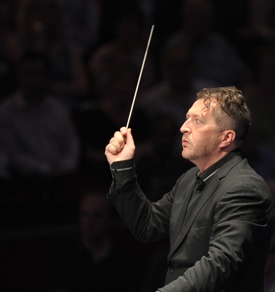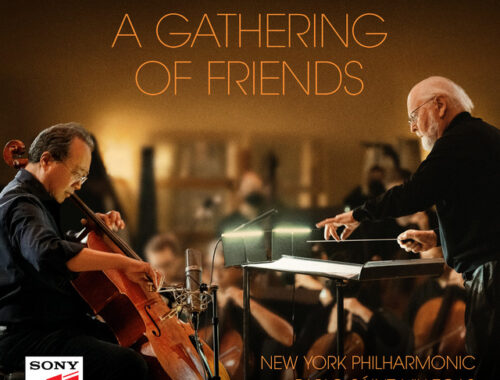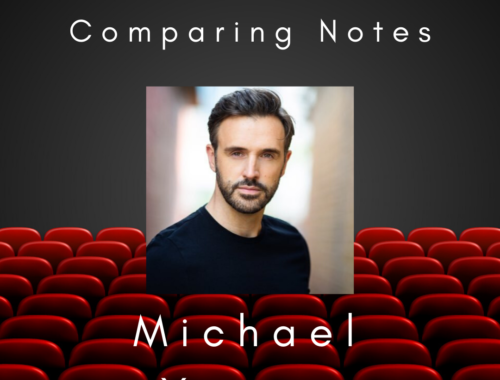Prom 8, BBC Symphony Orchestra, Adès, Royal Albert Hall (Review)
 Death becomes him. Enter Thomas Adès, composer, conductor, and now grim reaper. The much-anticipated World Premiere of his Totentanz rolled into the Proms like a black juggernaut, an invitation to the dance that none could resist sitting out. And even the work’s dedicatee, Witold Lutoslawski, and kindred spirit, Benjamin Britten, were celebrated in this their centenary year with intimations of mortality. Life-affirming it was not – though, as Alfred Hitchcock once quipped, even death can be fun. A healthy sense of irony is not just helpful but necessary.
Death becomes him. Enter Thomas Adès, composer, conductor, and now grim reaper. The much-anticipated World Premiere of his Totentanz rolled into the Proms like a black juggernaut, an invitation to the dance that none could resist sitting out. And even the work’s dedicatee, Witold Lutoslawski, and kindred spirit, Benjamin Britten, were celebrated in this their centenary year with intimations of mortality. Life-affirming it was not – though, as Alfred Hitchcock once quipped, even death can be fun. A healthy sense of irony is not just helpful but necessary.
Was that, one wonders, what lay at the back of young Benjamin Britten’s mind when he offered his Sinfonia da Requiem to the Japanese government in response to their commission for a piece to celebrate 2,600 years of the Mikado dynasty? 1940 was the year. He cannot have been serious – and yet he was – and as the doom-laden opening of the piece once again morphed into a remorseless slow march (a clear predecessor of the “Libera me” from War Requiem) and Adès weighed in ever more thunderously with the heavy drum beats the magnitude of the insult could not have been plainer. Small wonder the Japanese declined the offering. But how ironical the presence on the platform of a gigantic Japanese Taiko Drum, a looming presence sat in waiting for Adès’ own piece.
Actually the central “Dies irae” of Britten’s fledgling orchestral piece is also a dance of death, this one appropriately enough for the Day of Wrath, and I can see exactly why Adès will have seen it as the perfect opener for the evening, this middle movement snapping at our heels while a cynical saxophone makes some attempt at a Lacrymosa. Britten’s closing “Requiem aeternam” is a bit pat in the Hollywood sense and requires lusher violins than the BBC Symphony Orchestra could muster for Adès – but one cannot doubt its effectiveness with or without the Japanese connection.
Imagine then a solo cello marking time with one note, the same note, every second for what begins to sound like a countdown to eternity. The five minutes of solo cello at the start of Witold Lutoslawski’s Cello Concerto (written, of course, for Rostropovich) is at once as austere and as gripping as anything he ever penned – as distracted as anything in Hamlet. Paul Watkins soliloquised with extraordinary concentration and understanding. It is, as ever with this composer, that the beauty of this piece is in direct proportion to its intellectual complexity and emotional directness. Lutoslawski was/is fastidious and liberated. What could be more savage than the fanfares of derision that imitate and mock the cello’s Johnny-One-Note stance at the opening or the revelation of the cello turned Cantor in the aching “Cantilena” where imitation in the entire string section is indeed the sincerest form of flattery.
So when Thomas Adès arrives at the biggest climax of his mightily ambitious Totentanz the diabolical clamour of aleatoric brass becomes a mirror image of Lutoslawski’s favourite device albeit on a cosmic scale. Adès’ symphonic dance-cum-song-cycle behaves as if some malevolent spirit has taken possession of Mahler’s Das Lied von der Erde and then invited us to the exorcism. Death is a baritone – the amplified Simon Keenlyside – and his victims, or would-be “dance partners”, a mezzo soprano – the also amplified Christianne Stotijn in flowing black and wild hair like an avenging angel with sepulchral bottom notes. The texts are 15th Century Anonymous and the real problem here is that they pretty much repeat themselves with each exchange between Death and Victim leaving Adès to superimpose variety (which is somewhat at a premium) from without rather than within. Why, for instance, does the Parish Clerk get the most eerily beautiful music in the entire piece? What is there in that text that necessitates or inspires it? Nothing, actually – or rather nothing that stands apart from the others.
As ever, Adès’ command of the orchestra is thrillingly complete, full of jaw-dropping surprises, not least the way he amplifies the parodistic nature of the texts through a series of grotesquely halting and lumbering dance breaks as the orchestra huffs and puffs and splutters, transforming at one point into a waltzing fairground Wurlitzer. That was scarifying and fabulously accomplished in terms of the BBC Symphony Orchestra’s playing. As premieres go this one was pretty much on the money.
Mahler was there, of course, for the extraordinary final episode where Death takes the Child’s hand. Close harmony trumpets and the slowest of Landlers underpinned the chilling lines: “O Death, how can I understand? I cannot walk, yet I must dance!” The word “tanzen” repeated and repeated like that single note in the Lutoslawski – the child’s first and last faltering steps. Now these pages were touched with greatness, no question, and well worth the wait.


